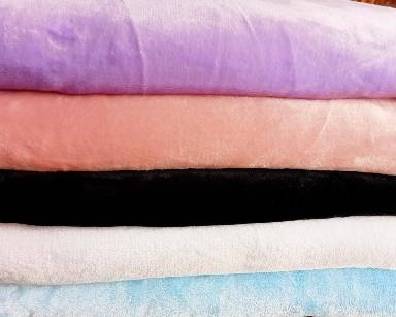Flannel Fabric

The Enduring Comfort of Flannel Fabrics
Flannel refers to a soft woven fabric that has been brushed on one or both sides to create a fuzzy, napped finish. The brushing process lifts the fibers and creates small air pockets that help trap heat. Traditional flannel was made from carded wool but today it also incorporates cotton, synthetic fibers, and blends. The signature brushed texture gives the flannel its flexibility, breathability, and ability to provide warmth without overheating. Flannel has a slightly loose weave that allows it to trap heat yet still breathe, keeping you cozy and comfortable. The slight stretch from the brushing helps the flannel move with the body.
The History of Flannel
Flannel fabric originated in Welsh mills in the 17th century, where it was woven from local wool and brushed into a soft, warm fabric ideal for colder climates. The word "flannel" comes from the Welsh term Gwlanen, meaning "woolen. Over the next centuries, flannel manufacturing spread across parts of England, Scotland, and eventually America. By the 19th century, flannel shirts and underwear had become a popular staple in men’s wardrobes. Women also adopted the use of flannel fabrics for dresses and shirts. Today, the classic buffalo plaid remains one of the most iconic flannel patterns
Caring for Flannel
While flannel may include synthetics today, traditionally it was made from wool and other animal fibers that allow it to be washed frequently without losing its shape. Flannel can be machine washed warm with mild detergent, then either tumble dried on low or hung to air dry. Avoid over-drying flannel. Adding a touch of fabric softener can help enhance flannel's brushed surface nap if desired.
Using Flannel
Thanks to its timeless style and versatility, flannel can be incorporated into a wide
range of garments and household items:
With proper care, flannel only gets increasingly soft, cozy, and comfortable with
repeated washing over time. Its breathable warmth and casual style lend itself
beautifully to both rugged workwear and weekend relaxation.
Types of Flannel
Flannel fabric comes in several types, each tailored for specific uses. Cotton flannel is prized for its softness and breathability, perfect for shirts, pajamas, and bedding. Wool flannel offers superior warmth and resilience, ideal for suits and coats. Synthetic flannel, incorporating polyester, excels in durability and moisture-wicking properties, suited for outdoor wear. Ceylon flannel blends cotton's softness with wool's warmth, versatile for various garments and home textiles. Baby flannel, lightweight and gentle, is designed for infant clothing and bedding. Modern innovations have introduced high-performance blends, enhancing durability and expanding flannel's use in activewear.
Flannel in Fashion
Flannel is a staple in both casual and high-fashion wardrobes. It is often seen in:
The Sustainability of Flannel
Flannel made from natural fibers like organic cotton or wool can be a sustainable choice. Look for flannel products that are certified organic or made from recycled materials to reduce environmental impact. Proper care and maintenance also extend the life of flannel items, contributing to more sustainable consumption. Flannel’s enduring popularity is a testament to its comfort, versatility, and timeless appeal. Whether in the form of a classic plaid shirt or a cozy blanket, flannel remains a beloved fabric that continues to provide warmth and comfort to people all around the world.
Conclusion
Flannel’s enduring popularity is a testament to its comfort, versatility, and timeless appeal. From its origins in the Welsh countryside to its modern-day applications, flannel has remained a beloved fabric that continues to provide warmth and comfort. Whether in the form of a classic plaid shirt, cozy blanket, or stylish outerwear, flannel remains a versatile and essential textile in wardrobes and homes worldwide. Its ability to blend traditional charm with modern innovations ensures that flannel will continue to be a staple fabric for generations to come.












